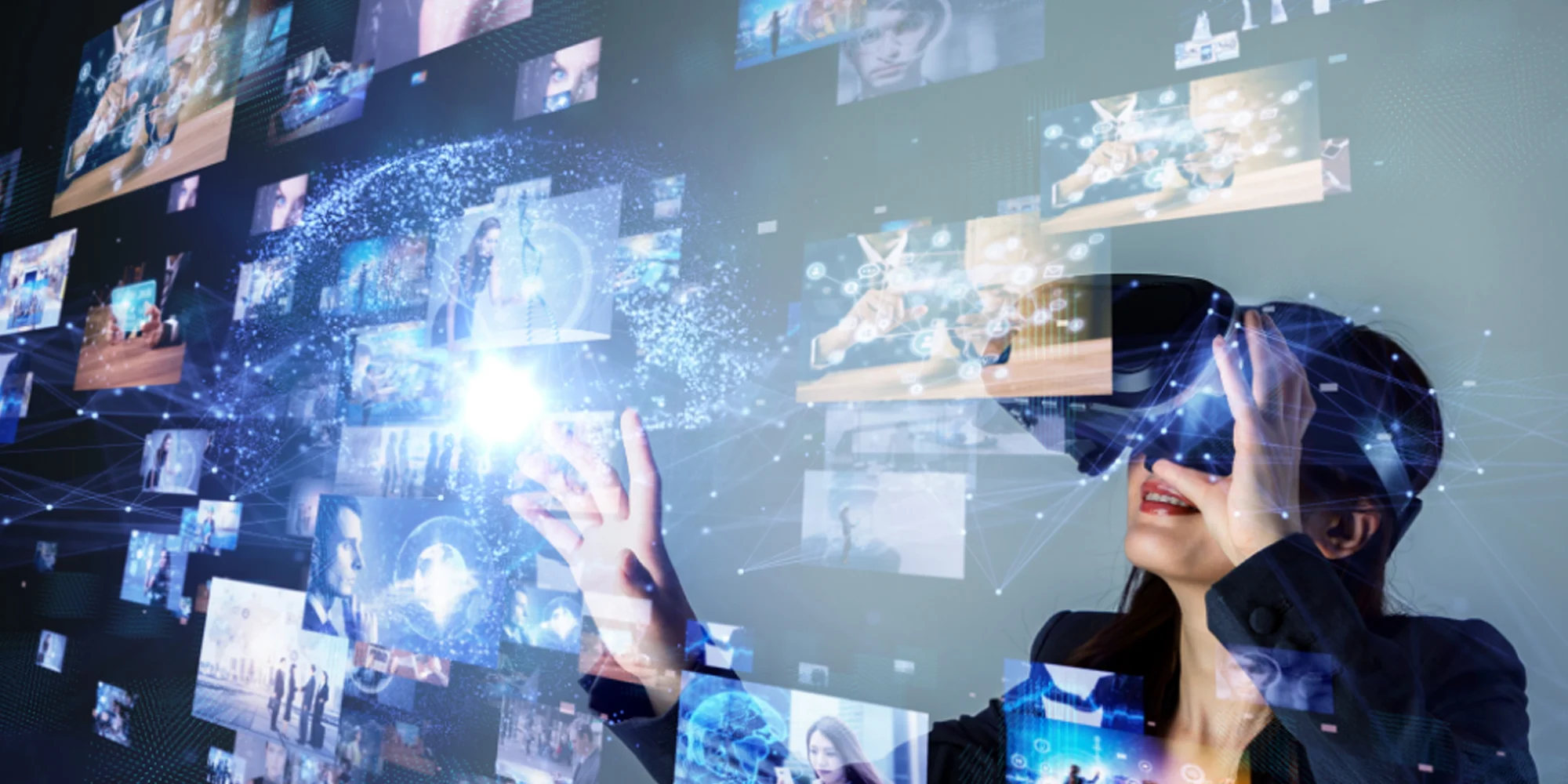
In this article
Benefits Of Augmented Reality To Marketing
In this article
Introduction
- The pandemic has made consumers more and more conscious and sophisticated.
- AR algorithm utilizes sensors to spot the position of physical objects and uses everyday devices such as smartphones to detect the position.
- As businesses are opening up they are facing a grave problem i.e. their customer’s purchasing habits have changed.
- AR provides a core advantage for businesses by easily making available hardware for the development of AR in smartphones and tablets.
- Businesses can use AR as an outstanding tool for creating viral campaigns and grab customers’ attention.
- In future, more and more e-commerce platforms will integrate their product line with AR features to enhance customer’s experience.
Today, the pandemic has made consumers more and more conscious and sophisticated. Their behaviors and shopping patterns are changing. In this time companies need to become more innovative manner to engage and surpass their expectations. It is also important to understand that as more and more people prefer to shop online. Businesses urgently need to implement new tools to provide realtime customer experience and there is no excuse for ignoring AR technology.
There is increased attention given to the needs and desires of consumers in markets. Advancement of technology can help brands keep pace with the changes in customer patterns. Augmented reality has become one of the latest trends in digital technology. Its numerous benefits are attracting more and more companies to incorporate it into their marketing and advertising strategies. Augmented reality (AR) is an emerging trend which is allowing brands to enable them to provide customers unique experiences with just a few tap into their mobiles.
Businesses can boost customer engagement with the help of AR by creating an AR that stimulates customer experience. Once that moment happens the magic begins. So, let’s discover the advantages of AR and some examples of marketing and advertising strategies by several brands. But before that, it is important to understand the difference between augmented reality and virtual reality (VR) and its robust adoption globally.
AR Expansion
According to Augmented/Virtual Reality Report Q2, 2015 by Digi-Capital Fundamental, the augmented reality and virtual reality market is going to reach nearly $150 billion by 2020. Moreover, the AR market alone will hold a $120 billion share of the market.
Despite being in infancy, AR has been around for a while now. In 1997, according to a Survey of Augmented Reality by Ronald T. Azuma, detail on the possible applications of AR and detected at least six classes of potential users including visualization, medical, annotation, maintenance and repair, robot path planning, military aircraft navigation, and targeting, and entertainment. AR is offering a new way of interacting with customers, colleagues, and the world around us.

Augmented Reality vs. Virtual Reality
Augmented Reality (AR) and Virtual Reality (VR) provide experience through 3D high-definition audio and video. While both technologies stem from the same idea of immersing users into a digital environment still there a big difference. VR provides a completely immersive environment but also puts the user into an isolated reality. On the contrary, AR is partly immersive and overlays virtual objects over the real world. In the world of AR, the user can look around through the artificial objects of the expanded layer.
Moreover, VR uses similar markers and math algorithms in a completely simulated environment. It detects eye and head movement, so when the users move their eyes and turn their heads, the graphic reacts accordingly. The AR algorithm utilizes sensors to spot the position of physical objects then it determines the locations of simulated ones. Also, it uses everyday devices such as smartphones and tablets to detect the position. While it’s still a long way for both AR and VR to rise in their full potential, development in technologies is providing businesses opportunities to benefit from. Today, even after more than twenty years later, tech moguls are still racing to present the best possible AR experience.
However, we can make out that AR is much more successful. The reason behind its success is ubiquity, while VR is more focused. VR completely immerses users into virtual reality and hence it is an excellent tool for 3D films or gaming. The report says that AR can address the market of both smartphones and tablets. This makes the fields and possibilities of AR apps are great.
Dmytro Skorokhod, iOS developer and ARKit expert, says “This is only the beginning of augmented reality applications. Here at Perfectial, we are actively involved in studying and implementing the technology. By using augmented reality we were able to contribute to business applications of ARKit and create a couple of concepts.”
Advantages of AR for Marketing
After a long period, businesses are opening up. However, even after lockdown, they are facing a grave problem that their customer’s purchasing habits are changing. Now, they need a better and improved customer experience than ever before. AR can help change how brands provide customer experience and drive customer engagement. AR provides several advantages but for business, the core advantage is that the hardware is available for the development of AR in smartphones and tablets. Also, the usage is intuitive and understanding.
For example, brands can allow users to try on clothes without actually wearing them to avoid containment through surfaces. Or they can enable them to check if the furniture fits the interior which is already done by IKEA. This can all be done with just a tap on customers on Android or iPhone AR app. In the coming years, the evolution of AR will also enable technology to appeal to other senses of touching, smelling, and feeling. Innovations are offering opportunities for businesses and a vast amount of markets and spheres. Among them, some of the sectors include real estate, banking, healthcare, manufacturing, and others.
For marketers, AR has become an outstanding tool for creating viral campaigns and grabbing customers’ attention as it can become a source of fun for customers. So let’s see how marketers can benefit from AR:
Technology Is Unique and Noticeable
Today, it has become much easier for brands to create a buzz by proper implementation of a technology to surprise your customers. This is because businesses can provide consumers with something that competitors don`t have yet.
Augmented Reality Gets More Virality
When it comes to creating a buzz, then word of mouth and social sharing have become the major means to increase the acquisition of new customers.
AR Opportunities for Personalization
Personalization allows brands to dive deeper and create something unique. Personalization not just expresses an individual’s personality but also is way more engaging than standard media content.

Content Quality Improvement
AR can provide you with a tool for creating content that cannot be made possible.
Interactivity Maintains the Retention
Today, almost all types of advertisements have been repeated by several brands several times so it’s important to be unique and entertain the audience. It has also become one of the most engaging content and motivates users to interact with the application again and again.
Different Ways AR Can Be Implemented in Businesses
Retail
Retail I one of the most affected sectors today. Retailers are not just dealing with the problem of shutting down their physical stores but also the customer’s fear of getting infected in stores. As the main motive of retail stores is to let customers experience their products, AR can be of great help. Retailers can recreate the whole product line in 3D to transform the shopping experience. They can even make it more accessible and fun.
Customers can view every item in the store and experience it from their smartphones. They can even spin products around. AR can provide the view from all angles, this also includes bulky items that might be difficult to explore. Retailers can even able their customers to virtually try on objects or place them in real rooms. And the more exciting part! All these experiences can be both recorded and shared with friends.
Viral content generation
Today, all businesses want their content to go viral. Viral content not only helps you place your brands in the public eye but also to engage with your audience. Viral content means more likes and even more shares. Businesses can create an amazing AR experience for users available on their smartphones. This can help the, easily shared on social media by either recording as a screen capture or just by a picture. This can help businesses enormously because the promotion is done by users themselves without the company spending any additional budget.
These experiences can be highly personalized by helping users add their own faces or environment with virtual objects. This helps them to share their unique content on social media and hence contribute to the online AR ad campaign.
AR Presentations
Be it a conference, an exhibition, or a trade show, an AR presentation has the potential to set you apart from competitors. Providing an AR experience can not only help your company make products more visible but also to attract visitors by emotionally engaging with them and turning them into partners or clients.
AR Ad Metrics
Lastly, AR experiences in ad campaigns can provide marketers and their analysts with additional metrics. These metrics can help you understand customers’ (or user’s) behavior better. It can enable analysts to explore how our customers are acting in the AR, how are they creating their storyline, how long are they focusing on certain virtual objects, and how things are changing over time.
Some Successful AR campaigns
Let’s see some of the best advertising action brands implement AR in their strategies.
Coca Cola
Another example is Coca-Cola, the company launched a pioneering action in Spain. It connected the bus route analysis with the prediction data of the Madrid EMT. The marquee screen was activated and the graffiti on one of its spots came to life just when a bus arrived at a stop.
Shopify
Shopify, a Canadian e-commerce platform, launched an AR feature to help customers interact with the product by providing them with a more realistic sense. Sellers can create these 3D models for customers and using the 3D Warehouse app.
Sephora
Sephora wanted to facilitate the online purchase of makeup online. So, they created an app to that lets customers test its products using their smartphone camera and helps them check how it looks.
Ikea
Ikea, a Swedish company, implemented AR aiming to help users check-out the fitting of the furniture in their homes. They also wanted to help them adjust the size according to the spatial dimensions of the rooms they wished to decorate. The result was a masterpiece:
Banco Bilbao Vizcaya Argentaria
Banco Bilbao Vizcaya Argentaria or BBVA is a multinational financial service provider based in Spain. They launched an app which was the first of its kind in the banking sector in Europe to allow the search of homes. It also allowed the user to recommend rental and purchase prices for a specific property. It helped them compare the most convenient to buy or rent.
These brands have already used AR to satisfy the needs of their respective consumers. Similar to the many businesses that have already taken steps towards the implementation of AR and hence it will now gain greater relevance in the digital world. Apple’s CEO, Tim Cook, claims “Augmented Reality will be as important as eating three meals a day.”
Other big players including Facebook, Microsoft, Oculus, HTC/Valve, Samsung, and Sony are also making huge investments to make it compatible with their upcoming devices. The tech giants believe that this is the future.
AR Predictions Beyond 2019
The pandemic has increased the pace of implementation of technology and today businesses are diving deeper into the applications of AR in marketing. This has led to a surge in the potential number of application and adoption scenarios. Novica Gijevski, the owner of MotivaNova, says that several industries will see the AR application including education, military, medical research, architecture, and others.
AR in marketing and e-commerce has made its presence through smartphones. Initially, back in 2012, Google introduced its version of AR with the launch of Google Glass. It received a lot of criticism and skepticism; however, some of the recent adaptation suggests a paradigm shift. The future of AR will be more than contact lenses, fashionable eyewear, or even bionic eyes with immersive 3D displays. It will conjure up a digital layer of AR which will enable new classes of user experiences and applications.
More and more e-commerce platforms will integrate their product line with AR features which will help customers easily perceive the product design. They will enhance the customer’s experience by offering minimal discrepancies when potential buyers view a product in a real-life setting.
AR making its presence more dominating with every passing day in industries related to computer-aided design and engineering. Today, simple engineering and architectural tools have now become more easily accessible by most smartphone owners with the rise of technology.
Future of AR in Marketing
There have been several AR ventures fading away over the past decade than expected. However, unmistakably they have paved the path for others in the industry. AR in marketing and advertising begins with the advancements in technological infrastructure. Today, companies are continuing to adapt AR technology to provide a vivid experience to the end-consumer of their products and services.
Customers shifting preference towards e-commerce have proven to be a more natural shift in technological advancement. It integrates web development and visual stimuli meaning that it’s not just a marketing gimmick but a psychological tactic. It can subliminally remove the barrier of fantasy in the mind of a customer. This increases the probability of product purchase success or achieving a goal for an e-commerce website. It drastically improves the interactions of a potential buyer with a product by personalizing it.
AR has the potential to dominate e-commerce because it makes perceiving products easy. Hence, the companies that invest in AR for their marketing can reap its benefits by enjoying their investment and simultaneously viewing the world in a new dimension.
Tech Insights Digest
Sign up to receive our newsletter featuring the latest tech trends, in-depth articles, and exclusive insights. Stay ahead of the curve!



